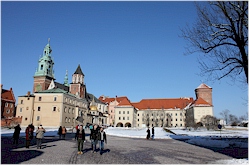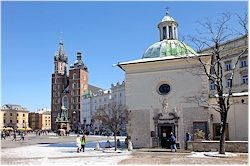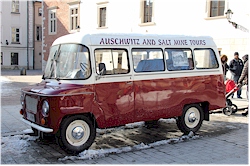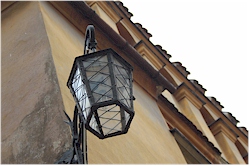|
Picture: cloth hall on Rynok Glowny |
|
» Barbican » Cathedral » City hall tower » Cloth Hall » Collegium Maius » Corpus Christi church » Florian gate » Pauline church on the rock » Piarist church » Schindler's factory » St.-Andreas' church » St.-Anna's church » St.-Bernardine church » St.-Florian's church » St.-Mary's church » St.-Peter and Paul's church » J. Slowackitheater » Wawel walls » Wawel Royal castle » more.. » Czartoryski Museum » Jagiellonian Univ. Museum » Museum of contemp. art (Mocak) » National Museum » Schindler's factory Museum » more... » Kazimierz (Joods) district » Plac Matejki » Plac Szczepanski » Rynek Glowny » Ulica Florianska » Ulica Kanonicza » Volledig overzicht... |
Krakow (Cracow)
History in short. Krakow is one of the oldest cities of Poland. Early settlements date back to paleolithic times but the town was only first mentioned at the end of the 10th century. By then there was already an significant commercial centre here. In 1038, Krakow became the capital of Poland, with the Wawel castle being the residence of the Polish kings, which made the town grow and flourish. The Polish kings were crowned and burried in Wawel cathedral.
Krakow experienced its golden age from the late 14th till the late 16th century, starting with the rule of Kazimierz the Great. He expanded the town and founded the Krakow Academy (Jagellonian University) in 1364. During that golden age, the renaissance was introduced in Krakow. Many new buildings were constructed and others were transformed. Krakow's importance started to decline when the seat of government was moved to Warsaw in 1596, but Krakow remained the place where the kings were coronated.
In World War II, the town was captured by Nazi Germany in September 1939. Professors from the Jagellonian University were emprisonned and the Jewish citizens (mainly from the Kazimierz district) were forced to move into a ghetto created in the Podgorze district. Many died in the ghetto or were sent to labour or extermination camps such as Auschwitz. Krakow was liberated in January 1945 by the Red Army, leaving most of the historic centre intact, miraculously.
Krakow's areas to visit. The city is divided in several districts. The most touristic areas are the old town center, Wawel and Kazimierz district.
Picture 1: Rynek Glowny with the
Cloth hall and city hall tower
|
» How to get to Krakow » Transport, tours, links,...
|
|
©
xplorengo.com. No information or pictures can be copied or distributed in any way
without written permission of xplorengo.com.
|

 The
13th century was a period of unrest by Mongol invasions, which
resulted in the town being ravaged and plundered several times.
In order to protect herself, defensive walls and watchtowers
were built around the town.
The
13th century was a period of unrest by Mongol invasions, which
resulted in the town being ravaged and plundered several times.
In order to protect herself, defensive walls and watchtowers
were built around the town. The following period in history was marked by the subsequential
invasions from foreign nations and the partition of Poland by
it's conquerers: Swedes, Prussians, Russians, Austrians,
Napoleon and again the Austrians. Krakow became a centre
of revolt and it's prosperity went up or down depending on the
foreign ruler.
The following period in history was marked by the subsequential
invasions from foreign nations and the partition of Poland by
it's conquerers: Swedes, Prussians, Russians, Austrians,
Napoleon and again the Austrians. Krakow became a centre
of revolt and it's prosperity went up or down depending on the
foreign ruler. 




